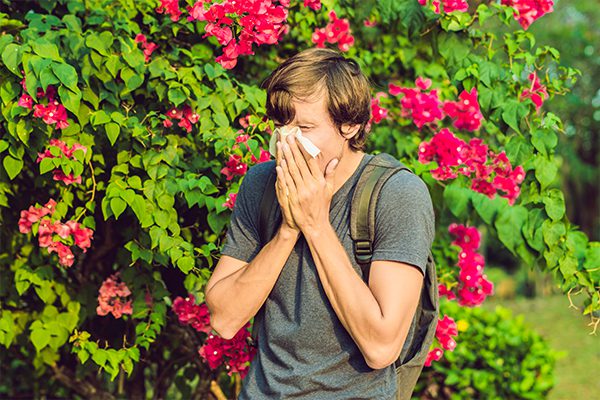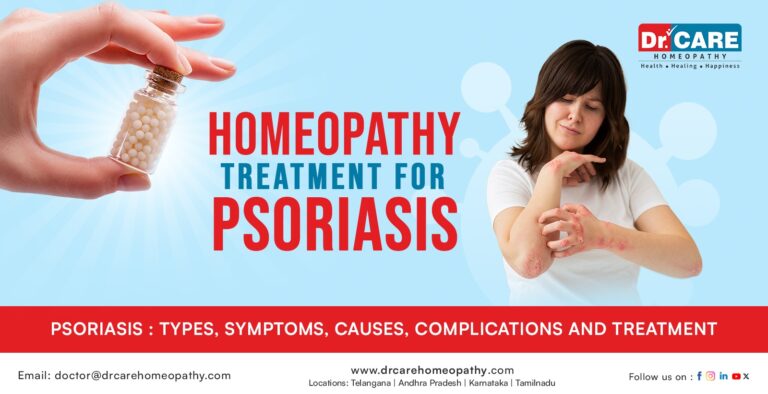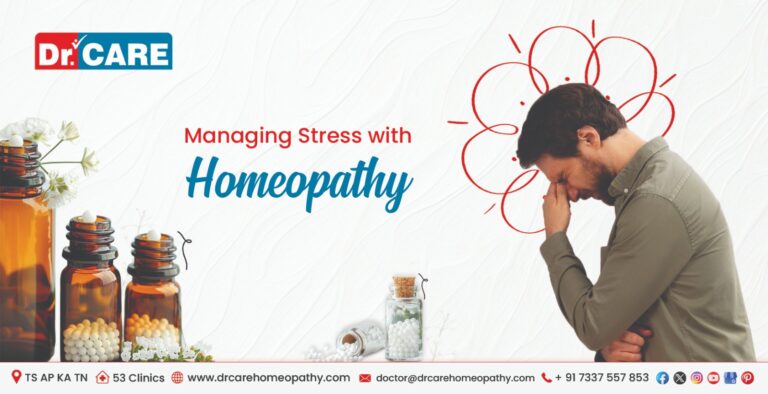Hayfever, also known as allergic rhinitis, is a common condition with symptoms similar to a cold. Sneezing, congestion, a runny nose, and sinus pressure are all possible symptoms. This article is about hayfever, often known as allergic rhinitis. Non-allergic rhinitis may be read here.
It is brought on by an allergic reaction to airborne chemicals such as pollen. The time of year it occurs is determined by the chemical, or allergy, to which the person reacts.
According to its name, hay fever does not indicate that the individual is allergic to hay and has a fever. Hay is rarely an allergy, and fever is not one of the symptoms.
In the United States, allergic rhinitis is the sixth most frequent disease (U.S.).
Hay fever is frequent in India when the seasons change, especially immediately before spring arrives. It causes difficulties breathing, and sneezing, and may significantly affect your sleep quality. This is especially terrible news for people who have obstructive sleep apnea.
Quick facts about Hay Fever
- Sneezing, a stuffy or runny nose, watery eyes, and itching of the nose, eyes, or the roof of the mouth are all symptoms of allergic rhinitis, often known as hay fever
- In 2016, 20 million persons aged 18 and up in the United States were diagnosed with hay fever, accounting for 8.2 percent of the adult population. A diagnosis was given to 9% of youngsters, or 6.1 million
- Seasonal allergic rhinitis occurs more frequently in the spring, summer, and early fall
- Allergic sensitivity to pollens from trees, grasses, weeds, or airborne mold spores is frequently the source of symptoms
- Treatment involves minimizing, removing, or decreasing exposure to allergens, medications, immunotherapy, or allergic injection
What precisely is allergic rhinitis (Hay Fever)?
Allergic rhinitis (hay fever) is an allergic reaction to allergens, small particles in the air. When you inhale allergens through your nose or mouth, your body responds by generating histamine, a natural molecule. Hay fever is caused by a variety of indoor and outdoor allergens. Dust mites, mold, pet dander, and pollen from trees and plants are common culprits.
Sneezing, nasal congestion, and irritation of the nose, throat, mouth, and eyes are hay fever symptoms. Infectious rhinitis, also known as the common cold, is not the same as allergic rhinitis. Hay fever is not spreadable.
When do most individuals acquire Hay Fever?
Hay fever can strike at any time of year. Seasonal allergies are more common in the spring, summer, and early fall when trees and weeds blossom. Perennial allergies can occur at any time of eye irritants, such as pet dander.
What is the prevalence of allergic rhinitis (Hay Fever)?
Hay fever is quite frequent. In the United States, around 15% to 20% of the population suffers from allergic rhinitis. Every year, millions of children and adults suffer from hay fever.
Who is at risk of Allergic Rhinitis?
Allergies are hereditary (passed down through families). If you have a parent or family member who suffers from allergies, you are more likely to suffer hay fever. Asthmatics and eczematous are more likely to acquire hay fever.
Symptoms of Hay Fever in Newborns and Children
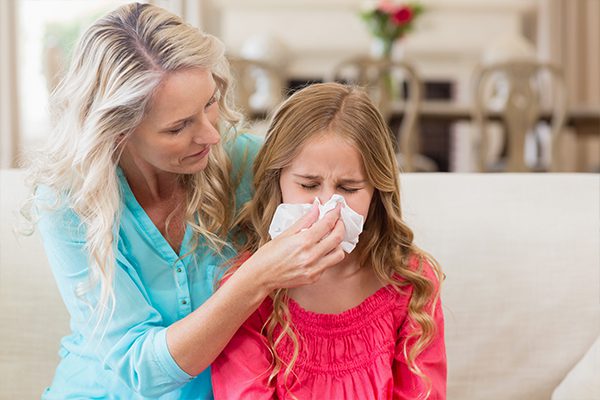
Hay fever is highly prevalent among youngsters, yet it seldom appears before three. However, it is critical to address allergy symptoms, especially in infants and children. Severe hay fever symptoms can lead to long-term health problems such as asthma, sinusitis, or recurrent ear infections. According to recent research, genetics may influence whether or not your child develops asthma in addition to hay fever.
Younger children may struggle harder with hay fever symptoms. It can have an impact on their focus and sleeping patterns. The symptoms are sometimes mistaken for those of a normal cold. However, unlike a cold, your kid will not have a temperature, and the symptoms will last for several weeks.
What are the long-term consequences of Hay Fever?
Hay fever symptoms frequently appear quickly after being exposed to a specific allergen. If you have these symptoms for longer than a few days, you may develop:
- Obstructed ears
- Throat pain
- Reduced perception of smell
- Headaches
- Shiners caused by allergies, or dark circles beneath the eyes
- Fatigue
- Irritability
- Puffiness behind the eyes
Do you have a Hay Fever rash?
Having these symptoms over an extended period might have a detrimental impact on:
- Sleep hygiene
- Symptoms of asthma
- Quality of life may suffer due to symptoms that make activities less pleasurable, lead you to be less productive at work and school, or even need you to miss work or school
- Infections of the ears, particularly in youngsters
- Eyes, also known as allergic conjunctivitis, arise when an allergen irritates the membrane surrounding your eye
- Due to chronic congestion, sinus irritation can progress to sinusitis
- Some people remark that hay fever seems like a cold, especially if it lasts a long time and the symptoms worsen
Treatment at home
Although no one can avoid the development of an allergy, persons who suffer from hay fever may find several techniques helpful in limiting the impact.
Here are some pointers:
- During pollen season, keep an eye on the pollen count. The internet and other media provide access to information. Pollen counts are greater on humid and windy non-rainy days and in the early evening
- When the pollen count is high, keep windows and doors closed
- Avoid mowing the lawn during sensitive months, garden on low-pollen days, and avoid grassy places when high pollen levels
- To soothe and eliminate pollen from the eyes, spray them with cold water regularly
- When pollen levels are high, shower and change your clothing after coming indoors
- To protect your eyes from pollen, wear wraparound glasses
- Wear a hat to keep pollen from accumulating in your hair and settling on your eyes and cheeks
- Install a pollen filter in your automobile and keep the windows closed during high-count hours
- You should not have flowers in your home
- Maintain as many dust-free surfaces, floors, and carpets as feasible
- Select a vacuum cleaner with a high-quality filter
- Make use of “mite-proof” bedding
- To avoid mold, use a dehumidifier
- If you are a smoker, stay away from cigarette smoke and stop
- When pets come indoors on a high pollen count day, wash them or smooth their fur down with a moist towel
- Smear Vaseline over the inside margins of your nostrils to prevent pollen from entering
- If you know your vulnerable period is approaching, see a doctor for a strategy
Causes
When the immune system misidentifies a typically innocuous airborne chemical as a threat, hay fever develops.
The body creates an antibody called immunoglobulin E (IgE) and releases the chemical histamine to combat the threat. The symptoms are caused by histamine.
Pollen and spores are seasonal hay fever triggers that elicit symptoms exclusively at specific seasons of the year.
The following are some examples of hay fever triggers:
- In the spring, tree pollen
- Late spring and summer grass pollen
- Weed pollen, particularly in the fall
- Fungus and mold spores, which are more prevalent in warm weather
- Pet hair or dander, dust mites, mildew, and cockroach dust are potential causes. Cigarette smoke, perfumes, and diesel exhaust fumes are irritants that cause hay fever symptoms.
Risk elements
Some factors make hay fever more likely.
- Genetic factors: The risk is increased if a close family member suffers from hay fever or another allergy
- Other allergies or asthma: People who have other allergies or asthma are more prone to suffer from hay fever
- Gender and age: Boys are more likely to get hay fever before puberty, whereas females are more afflicted after adolescence
- Date of birth: People born during the peak pollen season have a slightly increased chance of having hay fever
- Second-hand smoking: Early childhood exposure to cigarette smoke increases the incidence of hay fever
Other characteristics to consider include:
- Being the firstborn
- Come from a smaller family
- Come from a higher-income household
These final three risk variables may be associated with childhood infections.
A kid who experienced fewer childhood infections may be at a higher risk of developing autoimmune disorders later in life.
Can I avoid Hay Fever?
Although there is no way to avoid hay fever, lifestyle modifications can help you cope with your allergies. Avoiding irritants as much as possible will help to relieve hay fever symptoms. To relieve the symptoms, you should:
- Touching your face or rubbing your eyes or nose is not good
- When pollen levels are high in the spring, summer, and early fall, close windows in your home and automobile
- Dust mite coverings should be used to encase pillows, mattresses, and box springs
- Pets should be kept off couches and beds, and doors to places you don’t want them to enter should be closed
- Reduce the number of allergens in the air by using filters in your vacuum cleaner and air conditioner
- Wash your hands frequently, especially after interacting with pets
- Wear a hat and sunglasses to protect your eyes from pollen when you’re outside. As soon as you enter the house, change your clothing
Treatment and Management
Avoidance
The initial step in treating seasonal or perennial allergic rhinitis or hay fever should be to avoid the allergens that cause symptoms, if at all reasonable.
Exposure to the Outdoors
- Stay indoors as much as possible when pollen counts are at their highest, normally between the midmorning and early evening (depending on plant pollen), and when the wind moves pollens around
- Avoid using window fans, which can bring pollens and molds into your home
- When you’re outside, wear glasses or shades to reduce the quantity of pollen that gets into your eyes
- Pollen may stick to towels and sheets if clothes are hung outside to dry
- Avoid rubbing your eyes; doing so may irritate them and aggravate your symptoms
Exposure Indoors
Close your windows and utilize air conditioning in your car and at home. Maintain the cleanliness of your air conditioning unit.
Reduce dust mite exposure, especially in the bedroom. Pillow, comforters, duvet coverings, mattresses, and box springs should all have “mite-proof” covers. Wash your bedding regularly with hot water (at least 130 degrees Fahrenheit).
Keep your home’s humidity low (between 30 and 50 percent) to reduce mold exposure and regularly clean your bathrooms, kitchen, and basement. Use a dehumidifier, especially in basements and other moist, humid areas, and empty and clean it regularly. If mold is apparent, use a light detergent and a 5% bleach solution as suggested by an allergist.
Rather than dry-dusting or sweeping, clean floors with a moist rag or mop.
Animal Contact
Wash your hands after stroking any animals, and wash your clothes after visiting friends who have pets.
If you are allergic to a household pet, keep your pet as far away from your home as possible. If you must have the pet indoors, keep it out of your bedroom so that you are not exposed to pet allergies while sleeping.
If you have forced-air or central heating or cooling, shut the air ducts to your bedroom. Replace carpets with hardwood, tile, or linoleum, which are less prone to dander accumulation.
Rhinitis in the Workplace
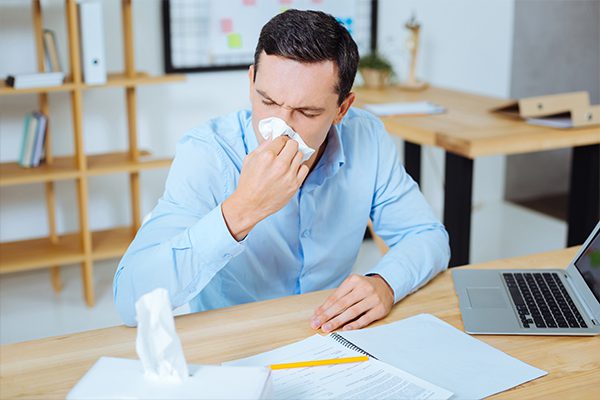
If you acquire symptoms similar to hay fever that occur or worsen during work, you may be suffering from occupational rhinitis.
Occupational rhinitis, also known as work-related rhinitis, is a disorder in which allergens in the workplace cause or worsen symptoms. Some of these symptoms are sneezing, a runny nose, and watery eyes. Cleaning products, chemical vapors, certain types of dust, and corrosive gases are all common triggers.
If your allergy symptoms emerge or worsen at work, consult with your allergist to identify probable triggers and build a treatment strategy.
Homeopathy Treatment
The majority of individuals want to understand the underlying idea of homeopathic treatment. Homeopathy treatment focuses on healing the individual rather than the disease through increasing immune levels.
Individuals choose how they want to be treated using homeopathy. These are determined by the individual’s physical, mental, and emotional symptoms.
Factors that trigger homeopathic methods only serve to shorten and lessen the severity of an episode. It also aids in reducing the frequency of attacks.
They lessen the need for anti-allergic medications and provide long-term relief. It helps allergic people live a healthy, natural lifestyle with no adverse effects.
Dr. Care’s homeopathy is one of the best homeopathic practices, with experts with extensive expertise. The team has innovative treatments and assists many people in overcoming allergic rhinitis.
Please contact us for more information about homeopathic treatment for Hay Fever or Allergic Rhinitis.[/vc_column_text][vc_column_text]Hayfever, also known as allergic rhinitis, is a common condition with symptoms similar to a cold. Sneezing, congestion, a runny nose, and sinus pressure are all possible symptoms. This article is about hayfever, often known as allergic rhinitis. Non-allergic rhinitis may be read here.
It is brought on by an allergic reaction to airborne chemicals such as pollen. The time of year it occurs is determined by the chemical, or allergy, to which the person reacts.
According to its name, hay fever does not indicate that the individual is allergic to hay and has a fever. Hay is rarely an allergy, and fever is not one of the symptoms.
In the United States, allergic rhinitis is the sixth most frequent disease (U.S.).
Hay fever is frequent in India when the seasons change, especially immediately before spring arrives. It causes difficulties breathing, and sneezing, and may significantly affect your sleep quality. This is especially terrible news for people who have obstructive sleep apnea.
Quick facts about Hay Fever
- Sneezing, a stuffy or runny nose, watery eyes, and itching of the nose, eyes, or the roof of the mouth are all symptoms of allergic rhinitis, often known as hay fever
- In 2016, 20 million persons aged 18 and up in the United States were diagnosed with hay fever, accounting for 8.2 percent of the adult population. A diagnosis was given to 9% of youngsters, or 6.1 million
- Seasonal allergic rhinitis occurs more frequently in the spring, summer, and early fall
- Allergic sensitivity to pollens from trees, grasses, weeds, or airborne mold spores is frequently the source of symptoms
- Treatment involves minimizing, removing, or decreasing exposure to allergens, medications, immunotherapy, or allergic injection
What precisely is allergic rhinitis (Hay Fever)?
Allergic rhinitis (hay fever) is an allergic reaction to allergens, small particles in the air. When you inhale allergens through your nose or mouth, your body responds by generating histamine, a natural molecule. Hay fever is caused by a variety of indoor and outdoor allergens. Dust mites, mold, pet dander, and pollen from trees and plants are common culprits.
Sneezing, nasal congestion, and irritation of the nose, throat, mouth, and eyes are hay fever symptoms. Infectious rhinitis, also known as the common cold, is not the same as allergic rhinitis. Hay fever is not spreadable.
When do most individuals acquire Hay Fever?
Hay fever can strike at any time of year. Seasonal allergies are more common in the spring, summer, and early fall when trees and weeds blossom. Perennial allergies can occur at any time of eye irritants, such as pet dander.
What is the prevalence of allergic rhinitis (Hay Fever)?
Hay fever is quite frequent. In the United States, around 15% to 20% of the population suffers from allergic rhinitis. Every year, millions of children and adults suffer from hay fever.
Who is at risk of Allergic Rhinitis?
Allergies are hereditary (passed down through families). If you have a parent or family member who suffers from allergies, you are more likely to suffer hay fever. Asthmatics and eczematous are more likely to acquire hay fever.
Symptoms of Hay Fever in Newborns and Children
Hay fever is highly prevalent among youngsters, yet it seldom appears before three. However, it is critical to address allergy symptoms, especially in infants and children. Severe hay fever symptoms can lead to long-term health problems such as asthma, sinusitis, or recurrent ear infections. According to recent research, genetics may influence whether or not your child develops asthma in addition to hay fever.
Younger children may struggle harder with hay fever symptoms. It can have an impact on their focus and sleeping patterns. The symptoms are sometimes mistaken for those of a normal cold. However, unlike a cold, your kid will not have a temperature, and the symptoms will last for several weeks.
What are the long-term consequences of Hay Fever?
Hay fever symptoms frequently appear quickly after being exposed to a specific allergen. If you have these symptoms for longer than a few days, you may develop:
- Obstructed ears
- Throat pain
- Reduced perception of smell
- Headaches
- Shiners caused by allergies, or dark circles beneath the eyes
- Fatigue
- Irritability
- Puffiness behind the eyes
Do you have a Hay Fever rash?
Having these symptoms over an extended period might have a detrimental impact on:
- Sleep hygiene
- Symptoms of asthma
- Quality of life may suffer due to symptoms that make activities less pleasurable, lead you to be less productive at work and school, or even need you to miss work or school
- Infections of the ears, particularly in youngsters
- Eyes, also known as allergic conjunctivitis, arise when an allergen irritates the membrane surrounding your eye
- Due to chronic congestion, sinus irritation can progress to sinusitis
- Some people remark that hay fever seems like a cold, especially if it lasts a long time and the symptoms worsen
Treatment at home
Although no one can avoid the development of an allergy, persons who suffer from hay fever may find several techniques helpful in limiting the impact.
Here are some pointers:
- During pollen season, keep an eye on the pollen count. The internet and other media provide access to information. Pollen counts are greater on humid and windy non-rainy days and in the early evening
- When the pollen count is high, keep windows and doors closed
- Avoid mowing the lawn during sensitive months, garden on low-pollen days, and avoid grassy places when high pollen levels
- To soothe and eliminate pollen from the eyes, spray them with cold water regularly
- When pollen levels are high, shower and change your clothing after coming indoors
- To protect your eyes from pollen, wear wraparound glasses
- Wear a hat to keep pollen from accumulating in your hair and settling on your eyes and cheeks
- Install a pollen filter in your automobile and keep the windows closed during high-count hours
- You should not have flowers in your home
- Maintain as many dust-free surfaces, floors, and carpets as feasible
- Select a vacuum cleaner with a high-quality filter
- Make use of “mite-proof” bedding
- To avoid mold, use a dehumidifier
- If you are a smoker, stay away from cigarette smoke and stop
- When pets come indoors on a high pollen count day, wash them or smooth their fur down with a moist towel
- Smear Vaseline over the inside margins of your nostrils to prevent pollen from entering
- If you know your vulnerable period is approaching, see a doctor for a strategy
Causes
When the immune system misidentifies a typically innocuous airborne chemical as a threat, hay fever develops.
The body creates an antibody called immunoglobulin E (IgE) and releases the chemical histamine to combat the threat. The symptoms are caused by histamine.
Pollen and spores are seasonal hay fever triggers that elicit symptoms exclusively at specific seasons of the year.
The following are some examples of hay fever triggers:
- In the spring, tree pollen
- Late spring and summer grass pollen
- Weed pollen, particularly in the fall
- Fungus and mold spores, which are more prevalent in warm weather
- Pet hair or dander, dust mites, mildew, and cockroach dust are potential causes. Cigarette smoke, perfumes, and diesel exhaust fumes are irritants that cause hay fever symptoms.
Risk elements
Some factors make hay fever more likely.
- Genetic factors: The risk is increased if a close family member suffers from hay fever or another allergy
- Other allergies or asthma: People who have other allergies or asthma are more prone to suffer from hay fever
- Gender and age: Boys are more likely to get hay fever before puberty, whereas females are more afflicted after adolescence
- Date of birth: People born during the peak pollen season have a slightly increased chance of having hay fever
- Second-hand smoking: Early childhood exposure to cigarette smoke increases the incidence of hay fever
Other characteristics to consider include:
- Being the firstborn
- Come from a smaller family
- Come from a higher-income household
These final three risk variables may be associated with childhood infections.
A kid who experienced fewer childhood infections may be at a higher risk of developing autoimmune disorders later in life.
Can I avoid Hay Fever?
Although there is no way to avoid hay fever, lifestyle modifications can help you cope with your allergies. Avoiding irritants as much as possible will help to relieve hay fever symptoms. To relieve the symptoms, you should:
- Touching your face or rubbing your eyes or nose is not good
- When pollen levels are high in the spring, summer, and early fall, close windows in your home and automobile
- Dust mite coverings should be used to encase pillows, mattresses, and box springs
- Pets should be kept off couches and beds, and doors to places you don’t want them to enter should be closed
- Reduce the number of allergens in the air by using filters in your vacuum cleaner and air conditioner
- Wash your hands frequently, especially after interacting with pets
- Wear a hat and sunglasses to protect your eyes from pollen when you’re outside. As soon as you enter the house, change your clothing
Treatment and Management
Avoidance
The initial step in treating seasonal or perennial allergic rhinitis or hay fever should be to avoid the allergens that cause symptoms, if at all reasonable.
Exposure to the Outdoors
- Stay indoors as much as possible when pollen counts are at their highest, normally between the midmorning and early evening (depending on plant pollen), and when the wind moves pollens around
- Avoid using window fans, which can bring pollens and molds into your home
- When you’re outside, wear glasses or shades to reduce the quantity of pollen that gets into your eyes
- Pollen may stick to towels and sheets if clothes are hung outside to dry
- Avoid rubbing your eyes; doing so may irritate them and aggravate your symptoms
Exposure Indoors
Close your windows and utilize air conditioning in your car and at home. Maintain the cleanliness of your air conditioning unit.
Reduce dust mite exposure, especially in the bedroom. Pillow, comforters, duvet coverings, mattresses, and box springs should all have “mite-proof” covers. Wash your bedding regularly with hot water (at least 130 degrees Fahrenheit).
Keep your home’s humidity low (between 30 and 50 percent) to reduce mold exposure and regularly clean your bathrooms, kitchen, and basement. Use a dehumidifier, especially in basements and other moist, humid areas, and empty and clean it regularly. If mold is apparent, use a light detergent and a 5% bleach solution as suggested by an allergist.
Rather than dry-dusting or sweeping, clean floors with a moist rag or mop.
Animal Contact
Wash your hands after stroking any animals, and wash your clothes after visiting friends who have pets.
If you are allergic to a household pet, keep your pet as far away from your home as possible. If you must have the pet indoors, keep it out of your bedroom so that you are not exposed to pet allergies while sleeping.
If you have forced-air or central heating or cooling, shut the air ducts to your bedroom. Replace carpets with hardwood, tile, or linoleum, which are less prone to dander accumulation.
Rhinitis in the Workplace
If you acquire symptoms similar to hay fever that occur or worsen during work, you may be suffering from occupational rhinitis.
Occupational rhinitis, also known as work-related rhinitis, is a disorder in which allergens in the workplace cause or worsen symptoms. Some of these symptoms are sneezing, a runny nose, and watery eyes. Cleaning products, chemical vapors, certain types of dust, and corrosive gases are all common triggers.
If your allergy symptoms emerge or worsen at work, consult with your allergist to identify probable triggers and build a treatment strategy.
Homeopathy Treatment
The majority of individuals want to understand the underlying idea of homeopathic treatment. Homeopathy treatment focuses on healing the individual rather than the disease through increasing immune levels.
Individuals choose how they want to be treated using homeopathy. These are determined by the individual’s physical, mental, and emotional symptoms.
Factors that trigger homeopathic methods only serve to shorten and lessen the severity of an episode. It also aids in reducing the frequency of attacks.
They lessen the need for anti-allergic medications and provide long-term relief. It helps allergic people live a healthy, natural lifestyle with no adverse effects.
Dr. Care’s homeopathy is one of the best homeopathic practices, with experts with extensive expertise. The team has innovative treatments and assists many people in overcoming allergic rhinitis.
Please contact us for more information about homeopathy treatment for Hay Fever or Allergic Rhinitis.



